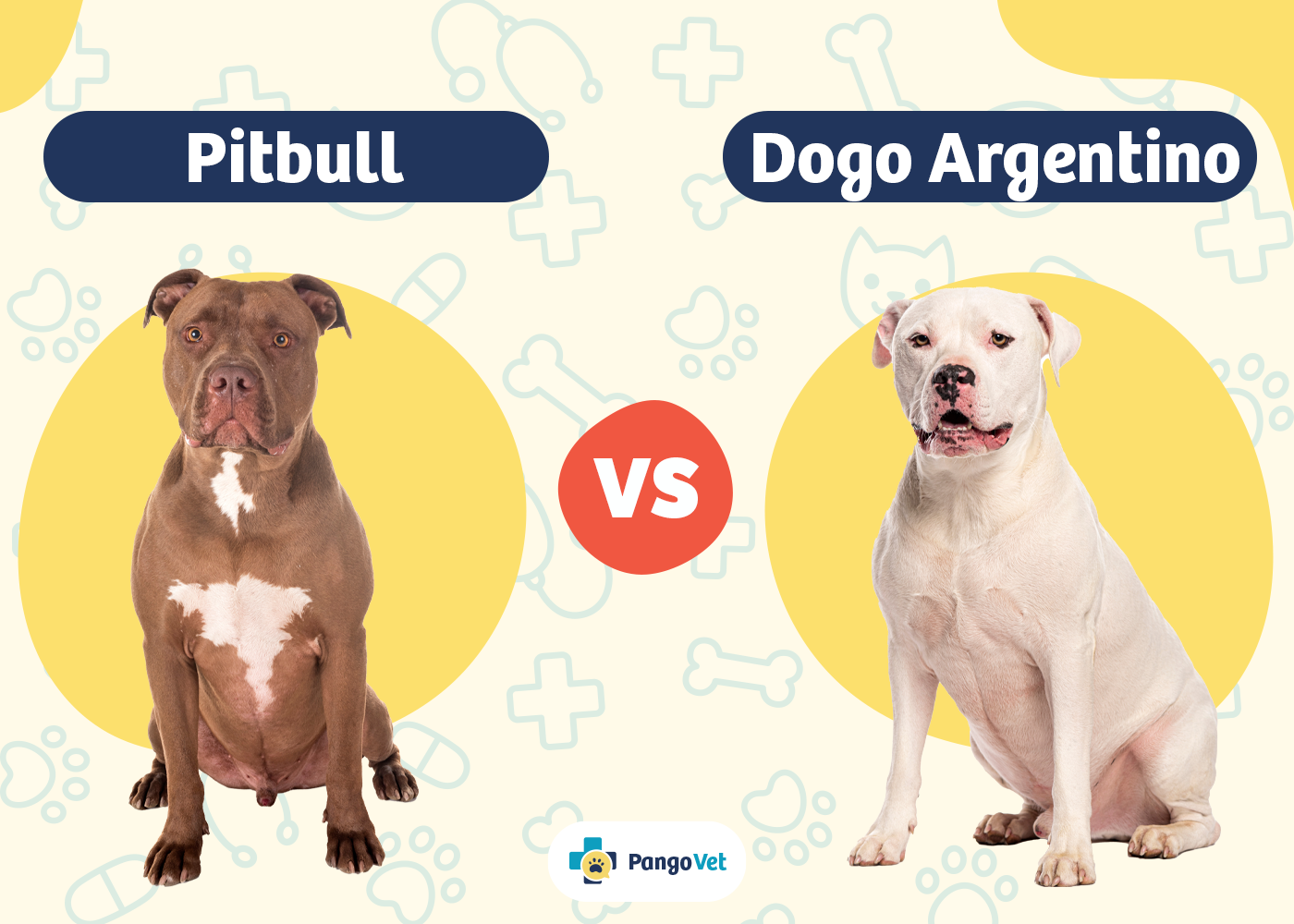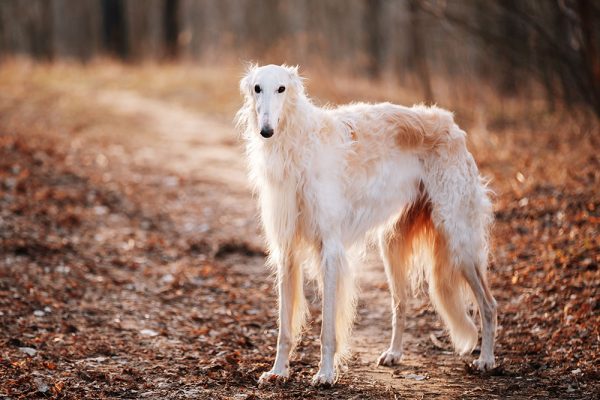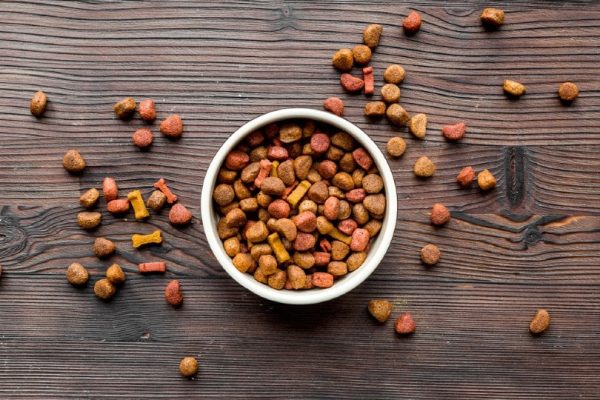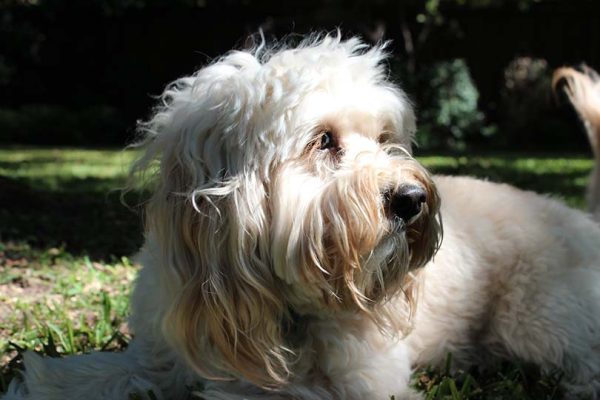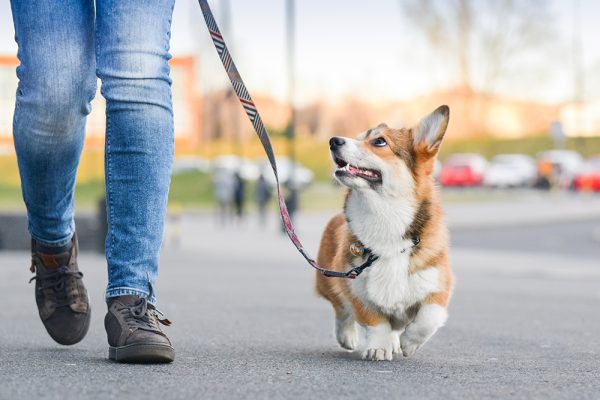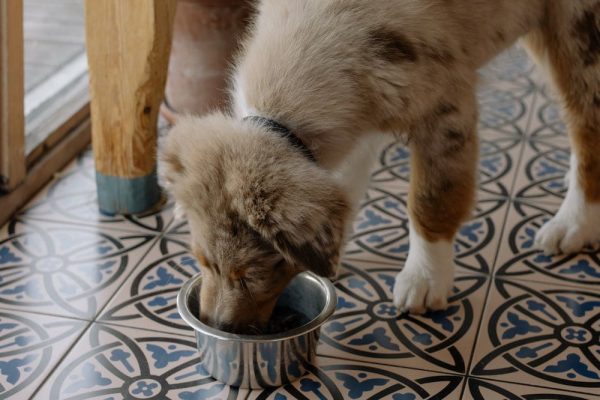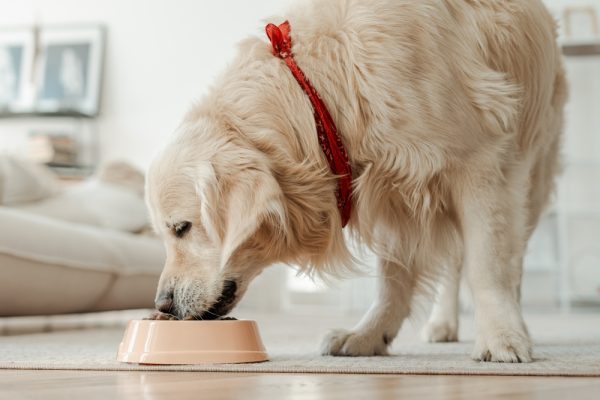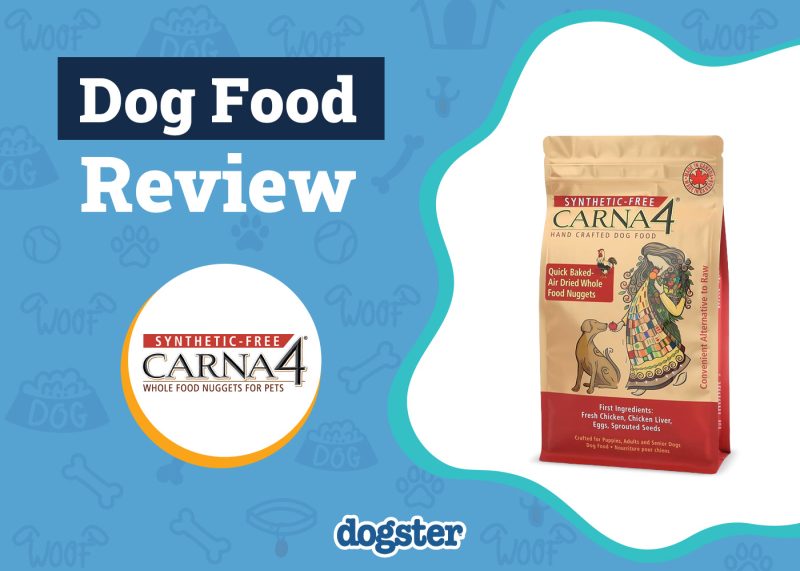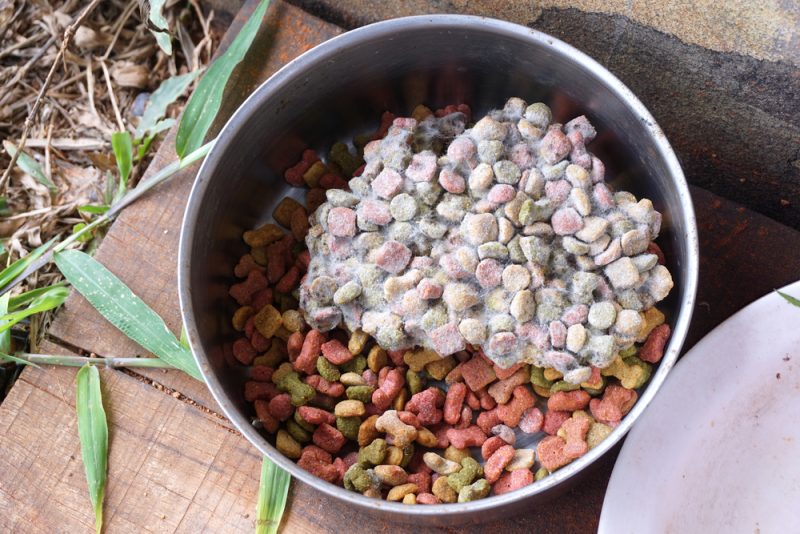In this article
Are you thinking of getting a new canine friend but not sure which breed to choose? Pitbulls and Dogo Argentinos are two breeds that are often compared. Pitbulls are known for their strength and unwavering fearlessness, while the Dogo Argentino’s size and protective nature make them a popular choice. Both breeds have their unique characteristics, but which one is right for you?
It’s essential to consider factors such as temperament, size, and lifestyle before making a decision. In this piece, we’ll take a closer look at the differences between Pitbulls and Dogo Argentinos to help you make an informed decision. Whether you’re looking for a loyal companion or a family pet, we’ll provide you with the information you need to choose the breed that best fits your needs.

Visual Differences
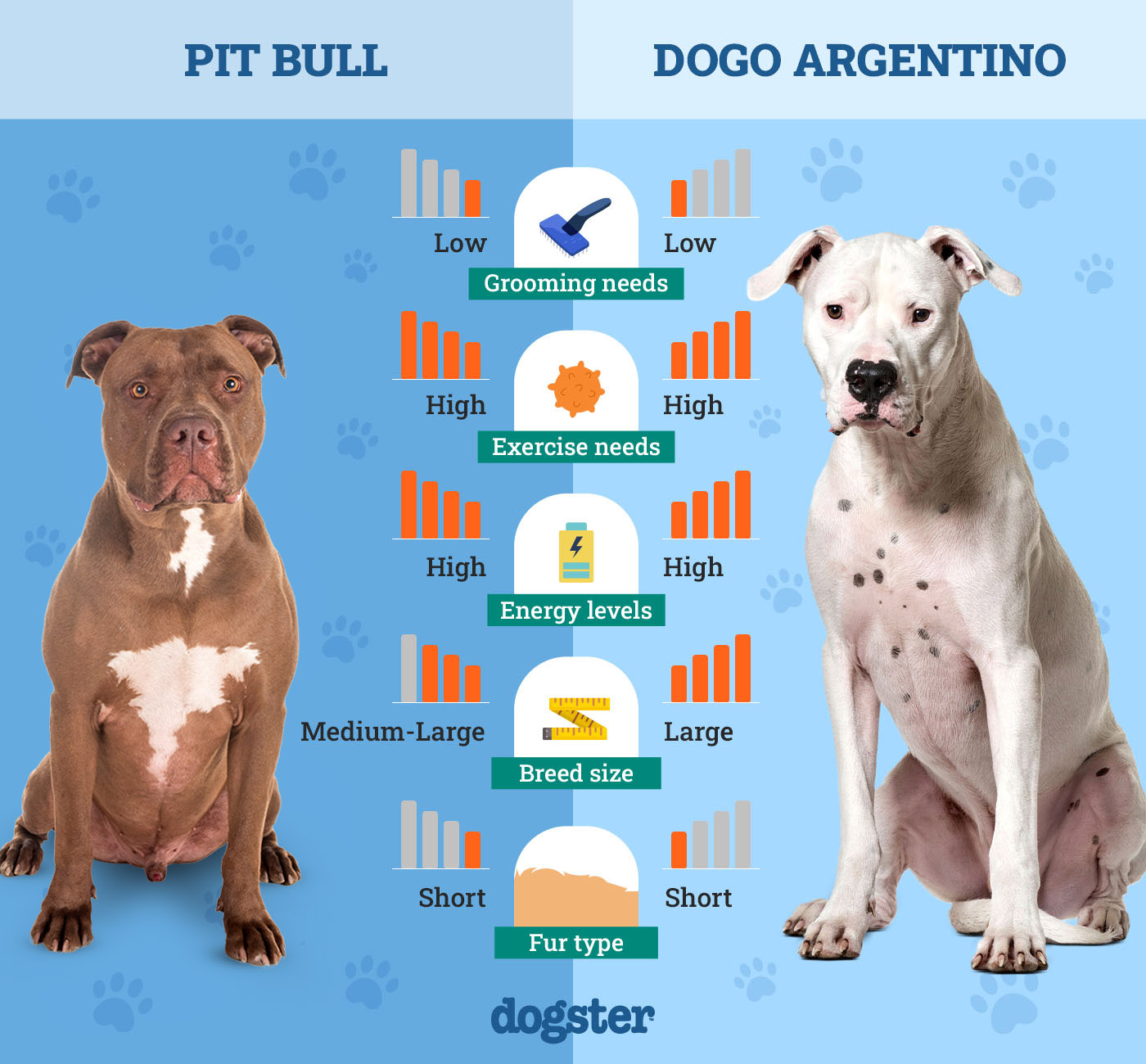
At a Glance
- Average height (adult): 17–22 inches
- Average weight (adult): 30–60 pounds
- Lifespan: 8–16 years
- Exercise: Minimum 1 hour a day, 2 hours is ideal
- Grooming needs: Moderate
- Family-friendly: Yes, but should be trained first and then supervised around young children
- Other pet-friendly: If socialized and trained
- Trainability: Intelligent, loyal, bred to protect & serve
- Average height (adult): 21–26 inches
- Average weight (adult): 55–80 pounds
- Lifespan: 10–13 years
- Exercise: 2+ hours a day
- Grooming needs: Moderate
- Family-friendly: Yes
- Other pet-friendly: Often
- Trainability: Intelligent but stubborn

Pitbull Breed Overview
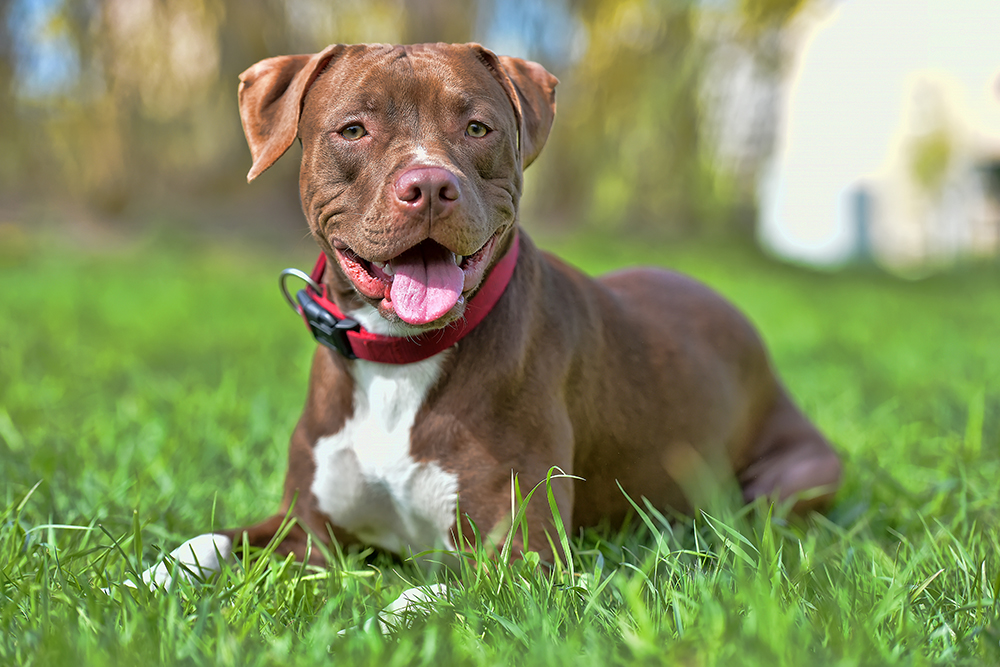
Pitbulls have a long and fascinating history. Originally bred in England during the 19th century for the sport of bull-baiting, Pitbulls were used to fight bulls in an arena setting. However, when bull-baiting was banned in England in the mid-1800s, Pitbulls were used for the sport of dogfighting instead. This was a brutal and illegal activity that involved two Pitbulls fighting to the death, with bets being placed on the outcome of the match. In the early 20th century, Pitbulls were brought to America and were used as working dogs, especially in the field of law enforcement.
Pitbulls are a medium-sized dog breed (though some can grow to be on the larger side) that typically weigh between 30 and 60 pounds. They have a very muscular and athletic build, with a broad head and powerful jaw. Pitbulls have short, smooth coats that come in a variety of colors, including black, brown, white, and brindle. But one of the most distinctive features of Pitbulls is their strong, muscular build. They have a broad chest and powerful legs, which gives them the strength and agility necessary for their original purpose as fighting dogs. However, Pitbulls are also super adaptable and can excel in a variety of different activities, including obedience training, agility, and even assistant work.
Personality / Character
Despite their reputation as aggressive dogs, Pitbulls are actually known for their friendly and affectionate nature. They’re highly social dogs that love to be around people and other animals, and are especially good with children. Pitbulls are also very intelligent dogs that are eager to please their owners, which makes them highly trainable.
However, due to their history as fighting dogs, Pitbulls can sometimes exhibit aggressive behavior towards other dogs and children if not properly socialized. So, it’s definitely crucial to socialize your Pitbull from a young age and to provide plenty of positive reinforcement training to help them learn how to interact appropriately with other dogs and people.
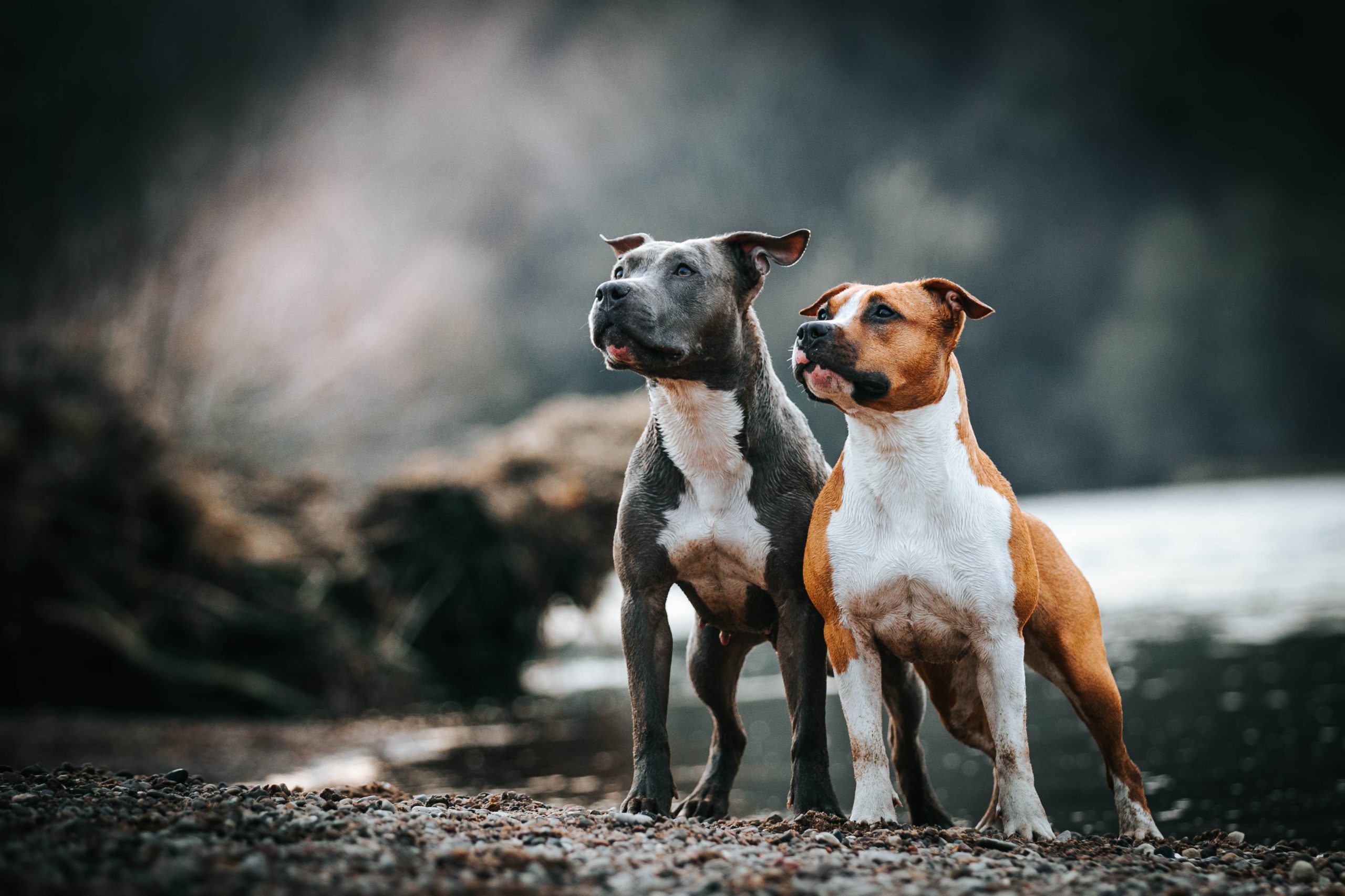
Training
Training is essential for any breed of dog, but it is particularly important for Pitbulls due to their strength and potential for aggressive behavior. Positive reinforcement training is the most effective method for training Pitbulls, as it helps to build a strong bond between the dog and their owner and encourages good behavior.
Pitbulls are very intelligent dogs that are eager to please their owners, which makes them highly trainable. However, due to their strength and protective nature, it’s important to establish clear boundaries and rules from a young age. Consistency and patience are key when training a Pitbull, as it may take some time for them to fully understand regular personality and to enforce your authority. It’s absolutely imperative to train these dogs while they’re still puppies and not fully developed.
Diet
Pitbulls are a high-energy breed of dog that require a specific diet to maintain their health and vitality. It’s important to choose a quality and high-protein dog food that is formulated for their unique nutritional needs. Look for dog food that contains high levels of protein and fat, as these are the building blocks for muscle development and energy production.
In terms of calorie requirements, Pitbulls need around 30 calories per pound of body weight per day. This means that a 50-pound Pitbull would require around 1,500 calories per day to maintain their weight. They also need about 2 grams of protein per pound of body weight as canines. However, if your Pitbull is particularly active or has a high metabolism, they may require more calories to stay healthy.
It’s also important to monitor your Pitbull’s weight and adjust their calorie intake accordingly. If your Pitbull is gaining weight, it may be necessary to reduce their calorie intake or increase their exercise levels to help them maintain a healthy weight.
Breeding
Breeding Pitbulls is a serious responsibility that requires careful consideration and planning. Pitbulls are a popular breed of dog that are known for their loyalty, strength, and athleticism. However, breeding Pitbulls requires a deep understanding of the breed’s temperament, health issues, and genetics. It is important to research and understand the breed’s history, as well as the potential risks and challenges associated with breeding Pitbulls.
Many cities and states have laws and regulations in place that restrict or prohibit the breeding of certain breeds of dogs, including Pitbulls.
When breeding them, it’s important to first check your local and state laws. Next, try to work with a reputable breeder who is knowledgeable and experienced in breeding the breed. A good breeder will conduct health screenings and genetic testing to ensure that the dogs are healthy and free from genetic disorders. They’ll also provide proper socialization and training for the puppies, as well as support and guidance for the new owners.
In addition, breeding Pitbulls requires a significant financial investment. So be ready to pay for housing, food, supplies and toys, and any marketing that you may need to spread the word about your new puppies.

Suitable For:
Owners who are experienced with medium or large breeds and have the time and resources to provide them with the necessary care and attention. They thrive in homes with active lifestyles, ample space to run and play, and an owner who is willing to provide them with plenty of exercise, training/socialization, and mental stimulation.

Dogo Argentino Breed Overview

The Dogo Argentino was created by crossing several breeds, including the Cordoba Fighting Dog, the Pointer, the Bulldog, and the Boxer. Dr. Martinez wanted to create a dog that had the strength and power of these breeds, but with a more balanced temperament. The breed was originally called the Cordoba Fighting Dog but was later renamed the Dogo Argentino after the country of its origin.
Today, the breed is recognized by many kennel clubs around the world, including the American Kennel Club (AKC). While the breed was originally used for hunting big game, it has also been used for search and rescue, police work, and as a family pet.
The Dogo Argentino is a large, muscular breed that is known for its athletic build and towering appearance – not to mention its resemblance to Pitbulls. These large dogs usually weigh about 80 to 100 pounds and can stand between 23 and 27 inches tall at the shoulder. The breed has a short, white (and spotty) coat that is easy to maintain and requires minimal grooming.
One of the most distinctive physical features of the Dogo Argentino is its head. These dogs have a rather large, broad head with a strong jaw and a deep muzzle. Their ears are typically cropped, although this practice is becoming less common in many countries, especially here in the US.
Personality / Character
This breed is known for its loyal and protective nature, as well as its strong prey drive. This breed was originally bred for hunting big game, and as such, it has a natural instinct to chase and catch prey. This can make the breed difficult to handle for inexperienced owners, as it requires a lot of training and socialization to ensure that the dog is well-behaved in public.
That being said, the Dogo Argentino is also known for its affectionate and loyal personality. This breed is highly devoted to its owners, and will go to great lengths to protect them, if necessary. The breed is also highly intelligent and trainable, and responds well to positive reinforcement training methods.
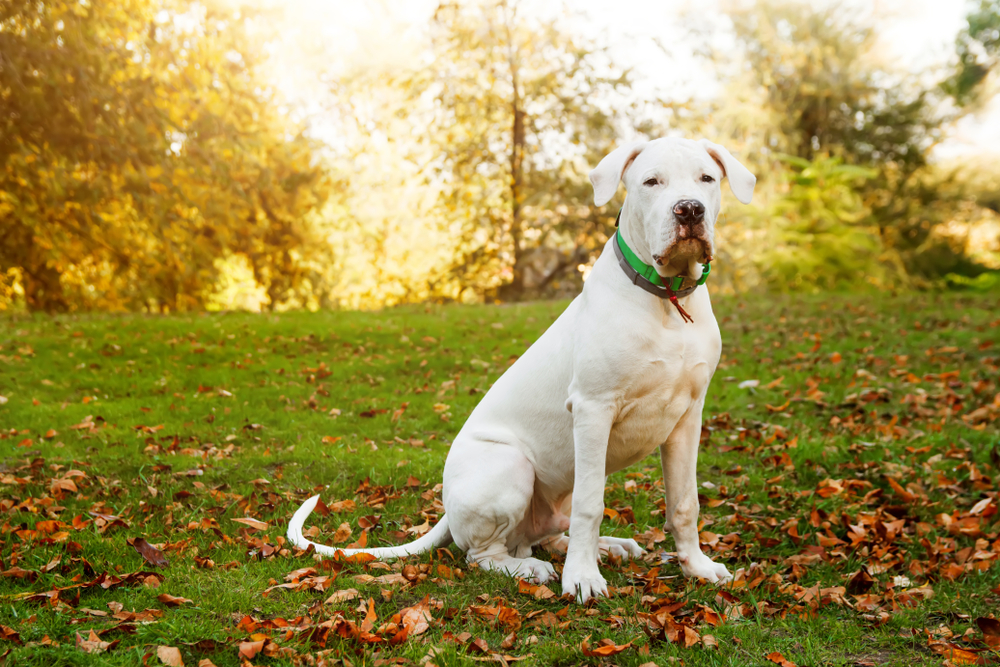
Training
Training and socialization are essential for the dog, especially given its strong personality and prey drive. It’s important to start training and socialization from a young age to ensure that your dog is well-behaved in public.
Positive reinforcement training methods are highly effective for the dog as this breed responds well to praise and rewards. Punishment-based training methods can be counterproductive and may make the breed more aggressive.
Socialization is also essential for the Dogo Argentino, as it can be wary of strangers and other animals. It’s important to introduce your Dogo Argentino to a variety of people and animals from a young age to ensure that it is comfortable in different situations.
Diet
Ideally, their diet should include high-quality protein sources, such as chicken or beef, as well as whole grains, vegetables, and fruits. Their daily calorie intake should be anywhere from 1,000 to 1,700 calories. It’s important to avoid foods that are high in fat, as this breed is prone to obesity. Additionally, you should avoid feeding your Dogo Argentino table scraps or processed foods that contain preservatives or artificial additives. Consult with your veterinarian to create a customized diet plan that meets your dog’s specific needs and preferences.
Breeding
The breeding process for these dogs should be done under close supervision and with proper knowledge of the dog’s reproductive system. Breeding a Dogo Argentino requires careful planning and preparation to ensure that the puppies are healthy and have desirable traits.
Before breeding, it’s important to ensure that both the male and female dogs are in good health and have no underlying genetic or health issues. It’s also recommended to have a vet perform a health check on both dogs to ensure they’re suitable for breeding. When selecting a mate, it’s important to choose a dog with good temperament, physical traits, and a pedigree that complements the female’s lineage.
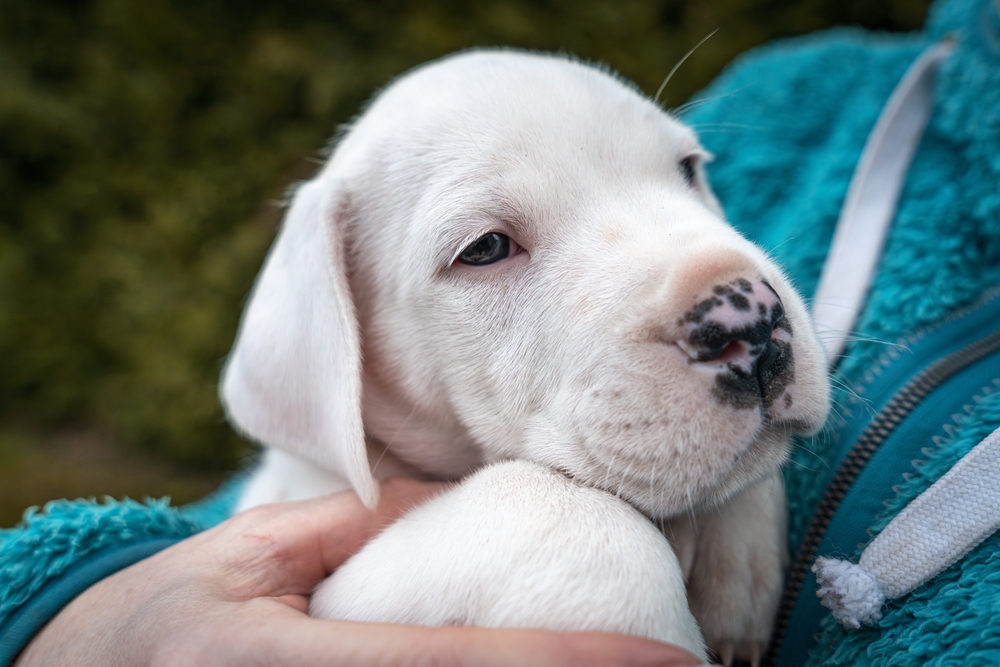
Suitable For:
Experienced and dedicated owners who are active and may enjoy outdoor activities like hiking, jogging, and hunting. They’re loyal and protective of their family, making them an excellent choice for families with children, as long as they’re socialized properly. However, due to their high prey drive, they’re not always suitable for homes with other small pets, and they should always be supervised when around other dogs.

Difference in Appearance
When it comes to visual differences between Pitbulls and Dogo Argentinos, there are a few notable distinctions. Pitbulls are typically more muscular and stockier in build, with a broad and flat head shape. They often have short, sleek fur that comes in a variety of colors, including blue, red, and brindle. In contrast, Dogo Argentinos are a bit larger but they have an athletic build as well. They have a broader skull and a wider jawline, with a thick, muscular neck. Their fur is typically short and white in color, with some black or brindle markings on their faces and ears.

Which Breed Is Right for You?
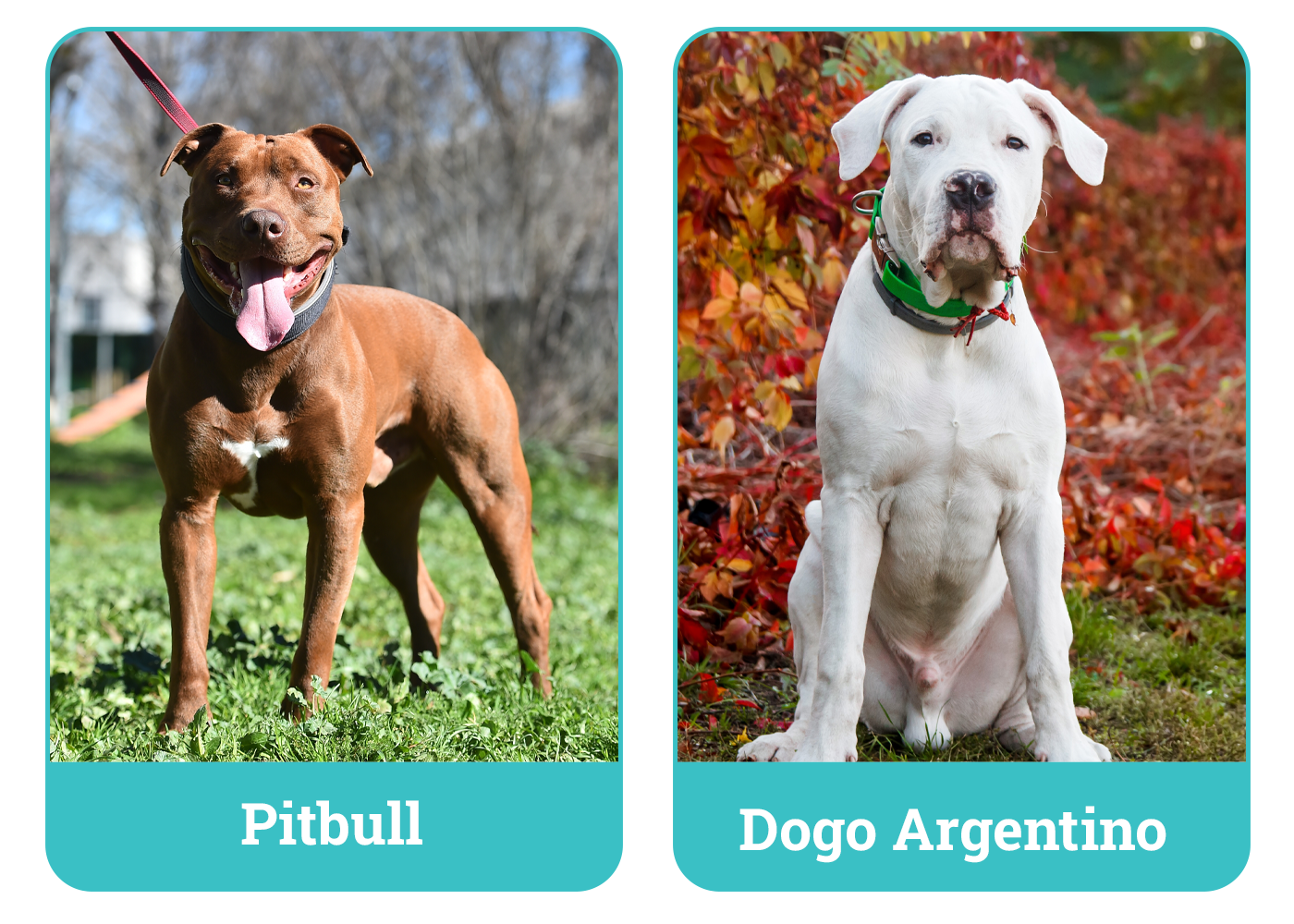
When it comes to selecting a dog breed, it’s crucial to choose one that’s compatible with your lifestyle and personality. Pitbulls are medium-sized dogs that are loyal and protective dogs, often used in law enforcement and as assistant/therapy dogs. On the other hand, Dogo Argentinos are larger and known for their strength, loyalty, and courage.
They were originally bred for big game hunting, but they also make excellent family pets. Ultimately, the best breed for you depends on your preferences and needs. Consider factors such as energy level, size, and temperament when making your decision. It’s also essential to research breed-specific health concerns and training requirements. Consulting with a quality breeder or rescue organization can also help you determine which breed is best suited for your lifestyle.
Featured Image Credit: Dogster/Shutterstock
